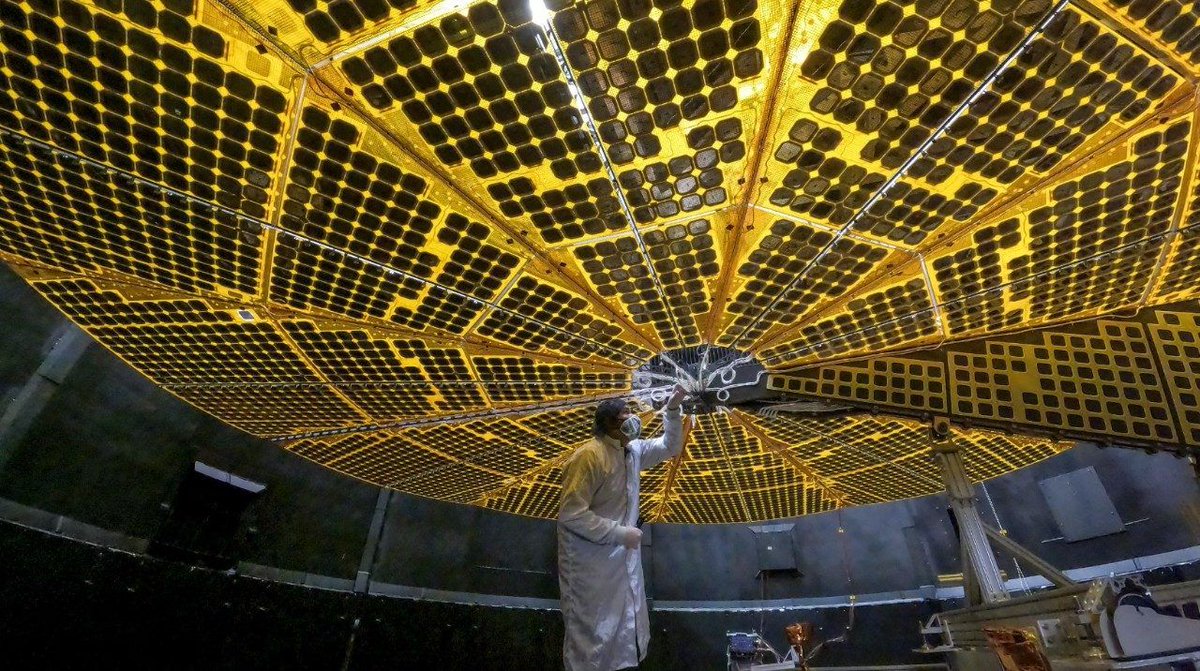As we’re fond of saying here at UT, space exploration is hard. Many things can go wrong when launching thousands of kgs of highly engineered equipment that took years to develop into space. Now, something seems to have gone wrong with NASA’s latest Discovery mission. Lucy, launched successfully by a ULA rocket on October 16th, seems to have a solar panel that didn’t quite “latch.”
The mission to explore Jupiter’s Trojan asteroids seems to be functional, with almost optimal power outputs from its two solar arrays. However, engineers noticed that they hadn’t received a “latched” signal from one of them, making them think the array did not fully deploy. Despite that, it is generating enough power to operate the spacecraft normally.
Those operations include firing test thrusters, though the probe itself is still operating in a “safe mode.” Despite the hiccup with the solar panel, the mission team decided to go ahead with a transition to “cruise” mode today, which will begin the craft’s journey towards Jupiter’s orbit.
On the way, they will continue attempting to understand what went wrong and even troubleshoot the issue. Another attempt to fully deploy the sail is expected “no earlier than late next week,” according to a NASA Press release on October 19th. But for now, the mission continues apace, with a major maneuver called the Trajectory Correction Maneuver-2 (TCM-2) planned in early December. TCM-1 wasn’t needed as the ULA rocket the craft had hitched a ride in release Lucy exactly where it needed to go.

Credit – Southwest Research Institute
With luck, the project’s engineers will find a way to fix the panel during Lucy’s lonely voyage out to the Trojans. Alternatively, if the spacecraft is still operating within parameters despite not having a fully deployed panel, that could work too. The other thing about engineering probes for space exploration is there’s a lot of redundancy and over-specification, so even if it doesn’t work perfectly, scientists should still get the data they’ve been waiting for in a few years.
Learn More:
NASA – Lucy Spacecraft Healthy; Solar Arrays Being Analyzed
NASA – NASA Team Remains Focused on Lucy’s Solar Arrays
Space.com – NASA eyes solar array glitch on new Lucy asteroid spacecraft
Ars Technica – Lucy’s solar panel hasn’t latched—a problem for a mission powered by the Sun
Lead Image:
Lucy with its solar panels completely deployed on the ground.
Credit – Lockheed Martin

